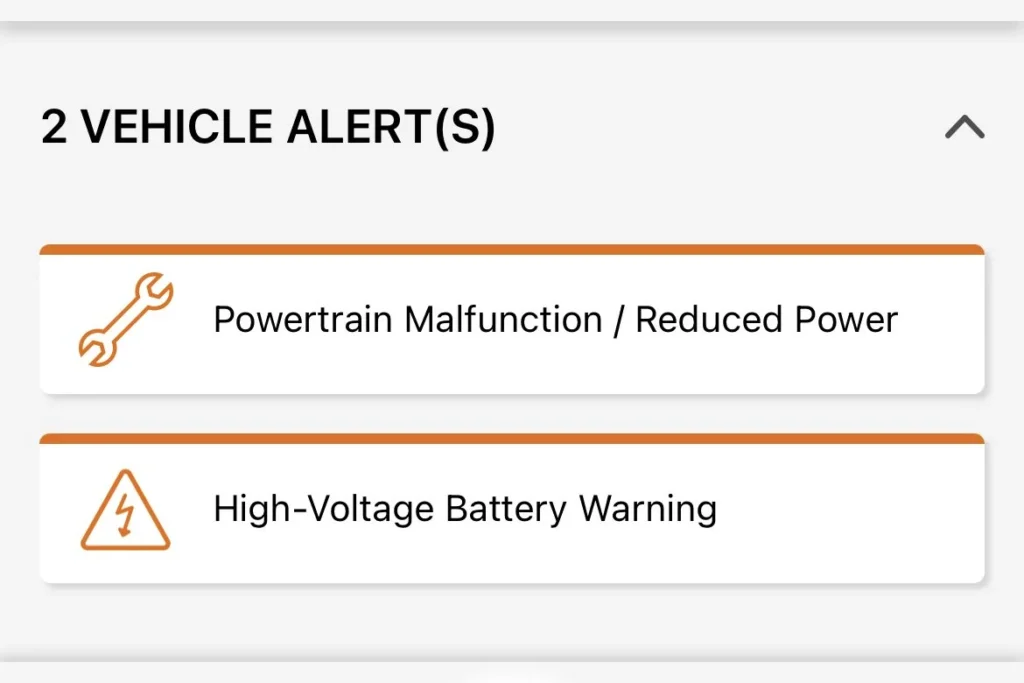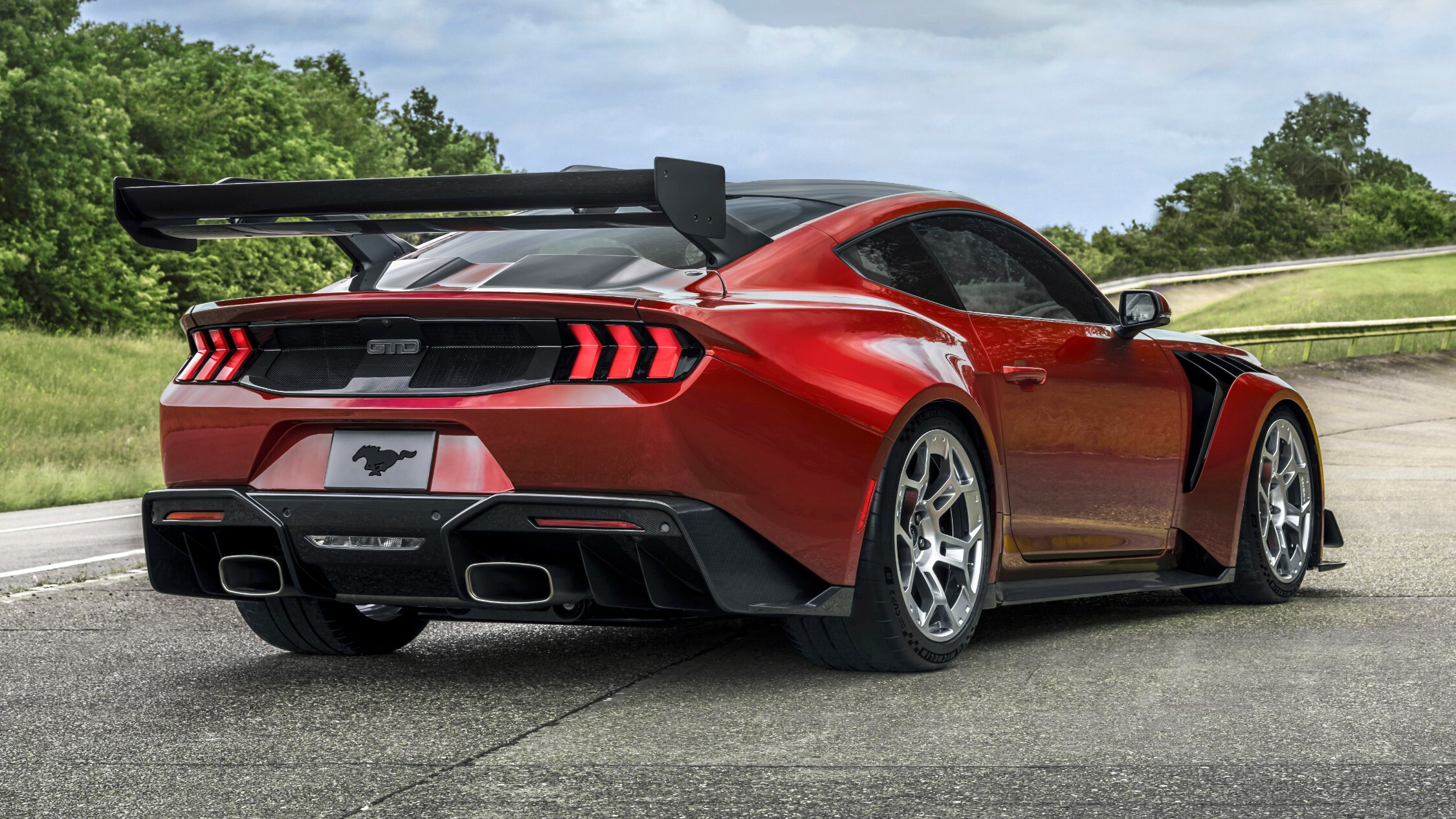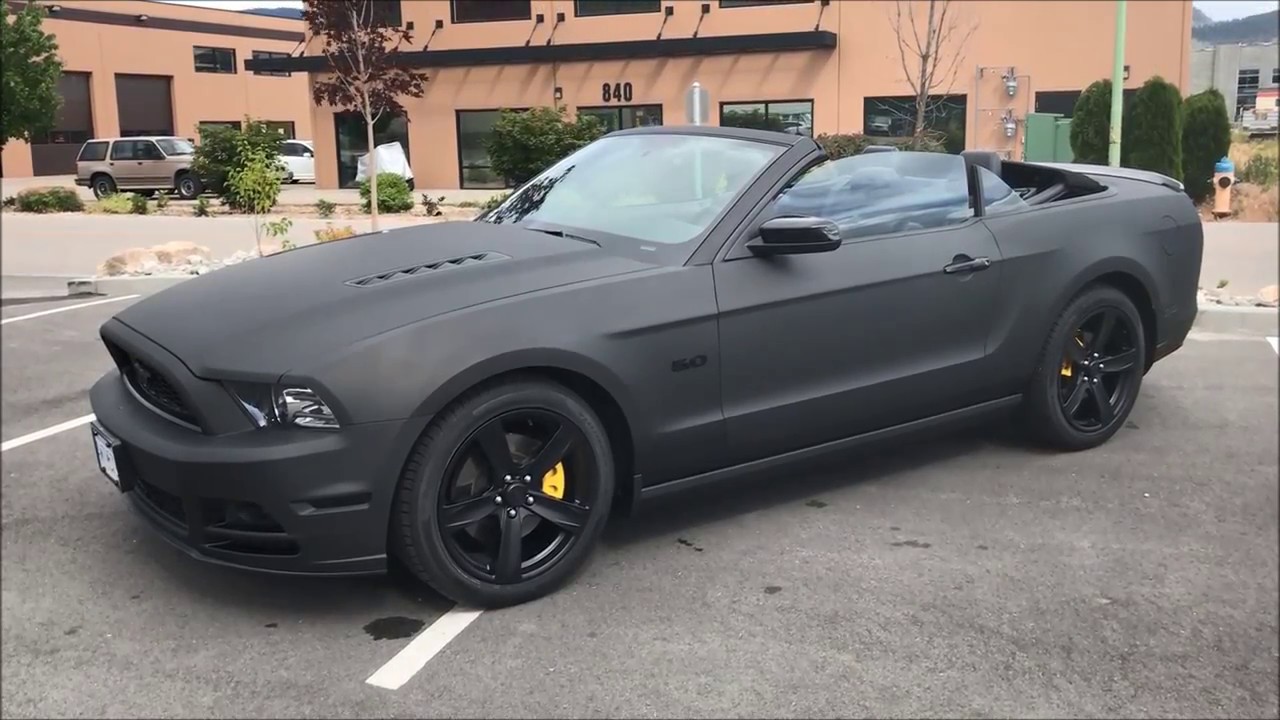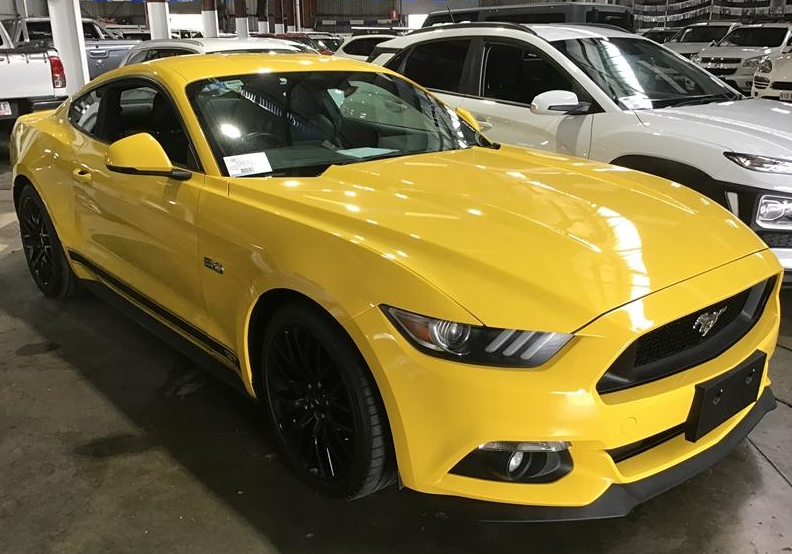The “Mustang Mach-E High Voltage Battery Warning” alerts the driver to potential issues with the vehicle’s high-voltage battery system, such as overheating or electrical malfunctions. It’s essential to address this warning quickly to avoid performance issues and ensure the safety of the vehicle.
If you’re driving a Ford Mustang Mach-E, encountering a “High Voltage Battery Warning” can understandably raise some concerns. This warning signals a potential issue with your electric vehicle’s high-voltage battery system, and it’s essential to understand its implications, causes, and how to address it effectively.
In this detailed guide, we will explore everything you need to know about the “High Voltage Battery Warning” in the Mustang Mach-E, why it occurs, how to troubleshoot the issue, and when it’s time to seek professional assistance.

Contents
What Is the High Voltage Battery Warning in Mustang Mach-E?
The “High Voltage Battery Warning” in the Mustang Mach-E is an alert that appears on the dashboard when the car’s onboard system detects a problem with the high-voltage battery. The high-voltage battery powers the electric motor, and it is a critical component for the vehicle’s overall performance and range. This warning is generally related to the health or functionality of the battery system, and it’s designed to protect the vehicle from potential damage or safety issues.
Key Aspects of the High Voltage Battery Warning:
The “Mach-E High Voltage Battery Warning” is a critical alert that indicates potential issues with the vehicle’s high-voltage battery system. Knowing the key aspects of this warning will help you identify its causes and take appropriate action.
- Battery Performance: If the high-voltage battery is not functioning correctly, it can lead to reduced performance or even failure of the vehicle’s propulsion system.
- Charging Issues: The warning can also be triggered if there are issues with the vehicle’s charging system, including overheating or malfunctioning electrical connections.
- Cooling System Problems: The battery cooling system plays a crucial role in managing the temperature of the high-voltage battery, and failure in this system could trigger the warning.
The warning typically appears on the vehicle’s screen with a specific message or icon that reads “High Voltage Battery Warning” or “Service Vehicle Soon.” If you encounter this warning, it’s essential to take immediate action, as it can affect your vehicle’s performance and safety.
Common Causes of the High Voltage Battery Warning
The “High Voltage Battery Warning” in the Mustang Mach E can be caused by a variety of factors. Below are some of the most common reasons why this warning may appear:
1. Battery Management System (BMS) Errors
The Battery Management System (BMS) monitors the health and status of the high-voltage battery. If there are errors within the BMS, it can trigger the warning by incorrectly reading battery voltages or detecting unbalanced battery cells. The BMS ensures that the battery is operating within safe parameters, and any faults in the system can lead to an alert.
2. Overheating of Battery Modules
The high-voltage battery in the Mustang Mach-E is equipped with multiple modules that help store energy for the electric motor. If any of these battery modules overheat, they can malfunction, leading to a decrease in battery performance and the triggering of the warning light. Overheating can happen due to prolonged heavy usage, faulty cooling systems, or extreme weather conditions.
3. Battery Cooling System Failure
The cooling system in the Mach-E is responsible for maintaining the battery at an optimal temperature range. If the cooling system fails, the battery may overheat, causing the vehicle to display a “High Voltage Battery Warning.” This issue can be caused by a malfunctioning coolant pump, blocked coolant lines, or a leak in the cooling system.
4. Faulty Electrical Connections
Loose or corroded electrical connections can interfere with the battery’s operation, leading to the warning light. If the connection between the battery and the vehicle’s electrical system is faulty, it may trigger the high-voltage warning, affecting the performance and safety of the vehicle.
5. Voltage Imbalances Across Battery Cells
The high-voltage battery is made up of multiple individual cells, and each cell needs to maintain a specific voltage level. If there is an imbalance between the cells (e.g., some cells charge faster or slower than others), the system may detect this irregularity and issue a high-voltage battery warning.
How to Respond to the High Voltage Battery Warning
If you encounter the “High Voltage Battery Warning” in your Mustang Mach-E, it’s essential to take the right steps to address the issue. Here’s what you should do:
1. Pull Over to a Safe Location
If you’re driving when the warning appears, the first thing to do is pull over to a safe location. Do not continue driving, as driving with a high-voltage battery issue could cause further damage or create safety risks.
2. Turn Off the Vehicle
Once you’ve safely stopped, turn off your vehicle completely. This allows the battery management system to reset and can sometimes clear temporary errors that may have caused the warning.
3. Wait for a Few Minutes
Allow the vehicle to rest for a few minutes before starting it again. In some cases, the warning may disappear after a brief pause, especially if it was caused by a temporary glitch.
4. Restart the Vehicle
After waiting for a few minutes, restart the vehicle to see if the warning has cleared. If it has, continue driving with caution. If the warning persists, it’s best to proceed with further troubleshooting or contact a professional.
5. Check for Software Updates
Sometimes, the high-voltage battery warning can be triggered by outdated software. Ensure that your vehicle’s software is up to date. Ford occasionally releases updates to the Mustang Mach-E’s system that can address bugs and improve the vehicle’s performance.
Troubleshooting Steps You Can Try
Here are a few steps that can help diagnose and fix the issue:
1. Inspect the Charging Equipment
Ensure that the charging equipment you are using is in good working condition. Faulty charging stations or incorrect charging cables can sometimes cause the high-voltage battery warning.
2. Examine the 12V Battery Health
In some cases, a weak 12V battery can cause the high-voltage warning to appear. Check the health of your 12V battery and replace it if necessary.
3. Perform a Visual Inspection of the Cooling System
If you suspect that the battery cooling system may be the issue, perform a visual inspection of the cooling system components. Look for leaks, blockages, or damage that could be causing a failure.
4. Check for Faulty Wiring or Corrosion
Check the wiring and electrical connections that lead to the battery and other key systems. Look for any signs of corrosion, loose connections, or wear and tear that may be affecting the vehicle’s performance.
5. Reset the Vehicle’s Computer System
Sometimes, the warning can be triggered by a glitch in the vehicle’s computer system. Resetting the system by disconnecting the battery for a few minutes can help clear minor issues.
When to Seek Professional Help
If none of the troubleshooting steps resolve the warning, it’s time to contact a professional. Driving with a high-voltage battery issue can lead to further damage and might even compromise your safety. Here are a few signs that indicate you need professional help:
- The warning persists even after trying the basic troubleshooting steps.
- The vehicle enters “limp mode” or becomes significantly less responsive.
- The battery is overheating, and there are visible signs of swelling or leakage.
Frequently Asked Questions
Here are some FAQs about mustang mach e high voltage battery warning –
1. What does the “High Voltage Battery Warning” mean in the Mustang Mach-E?
The warning indicates that there’s an issue with the high-voltage battery system. It could be related to the battery management system, cooling system, or electrical connections.
2. Can I drive with the “High Voltage Battery Warning”?
It’s not recommended to continue driving with this warning, as it can cause further damage or create safety risks.
3. How can I reset the warning?
You can try turning off the vehicle, waiting for a few minutes, and restarting it. If the warning persists, you may need to contact a service center.
4. Is this warning covered under warranty?
If your vehicle is still under warranty, the issue may be covered. Check with your Ford dealership for more details on warranty coverage.
5. What should I do if the warning continues after trying basic troubleshooting?
If the warning persists, it’s important to contact a certified Ford technician to diagnose and fix the problem.
Conclusion
The “Mustang Mach-E High Voltage Battery Warning” serves as an important safety feature, signaling potential issues with the vehicle’s battery system that require prompt attention. While the causes of this warning can vary, ranging from battery overheating to electrical malfunctions, it’s important to address the warning as soon as it appears to prevent further damage to the vehicle.




